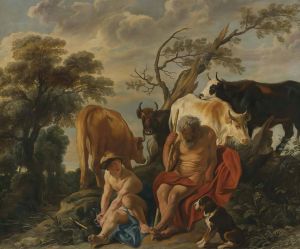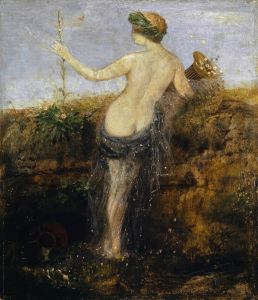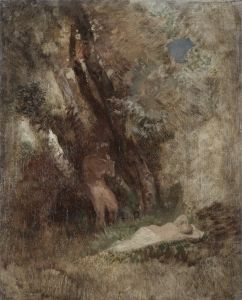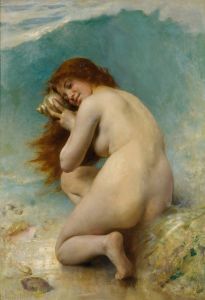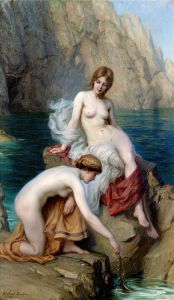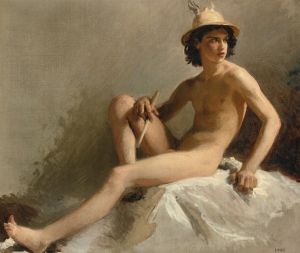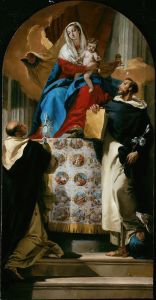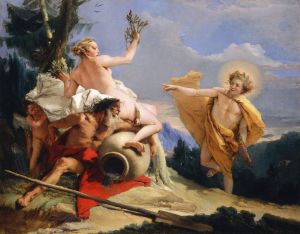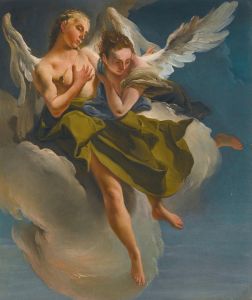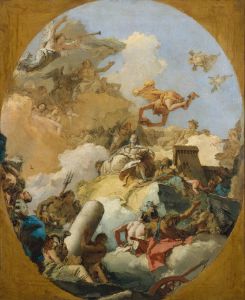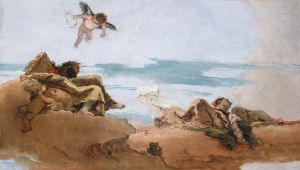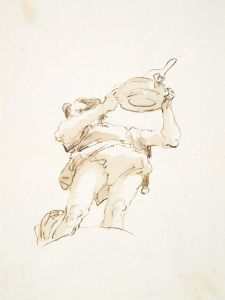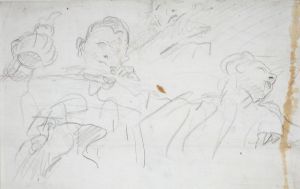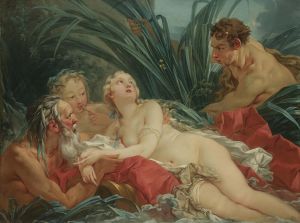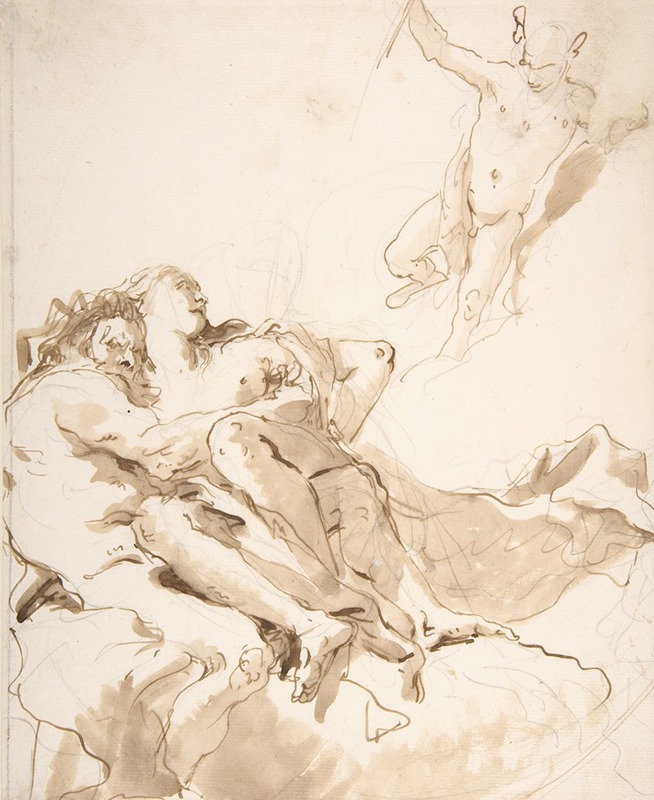
Mercury Appearing to a Marine Deity and a Nymph
A hand-painted replica of Giovanni Battista Tiepolo’s masterpiece Mercury Appearing to a Marine Deity and a Nymph, meticulously crafted by professional artists to capture the true essence of the original. Each piece is created with museum-quality canvas and rare mineral pigments, carefully painted by experienced artists with delicate brushstrokes and rich, layered colors to perfectly recreate the texture of the original artwork. Unlike machine-printed reproductions, this hand-painted version brings the painting to life, infused with the artist’s emotions and skill in every stroke. Whether for personal collection or home decoration, it instantly elevates the artistic atmosphere of any space.
"Mercury Appearing to a Marine Deity and a Nymph" is a painting by the renowned Italian artist Giovanni Battista Tiepolo, who was one of the most prominent painters of the 18th century. Tiepolo is celebrated for his grandiose and imaginative compositions, often characterized by their vibrant color palette and dynamic figures. This particular work exemplifies Tiepolo's mastery in depicting mythological themes with a sense of drama and movement.
The painting features the Roman god Mercury, identifiable by his winged helmet and caduceus, a staff entwined with two serpents. Mercury, known as the messenger of the gods, is depicted in a moment of divine intervention or communication. He appears to a marine deity, whose identity is not explicitly defined in the painting, and a nymph, a minor female nature deity typically associated with a particular location or landform.
Tiepolo's use of light and shadow in the painting creates a sense of depth and highlights the ethereal quality of the divine figures. The marine deity is portrayed with attributes that suggest a connection to the sea, possibly holding a trident or surrounded by aquatic elements, while the nymph is depicted with grace and beauty, embodying the idealized form of femininity common in mythological art.
The composition of the painting is dynamic, with Mercury positioned in a way that suggests movement, as if he has just descended from the heavens to deliver a message. The interaction between the figures is central to the narrative, with the marine deity and nymph appearing to be in a state of awe or contemplation, emphasizing the significance of Mercury's presence.
Tiepolo's work is known for its theatricality, and "Mercury Appearing to a Marine Deity and a Nymph" is no exception. The artist's ability to convey complex mythological stories through expressive gestures and vivid imagery is evident in this painting. The use of color is particularly noteworthy, with Tiepolo employing a palette that enhances the otherworldly atmosphere of the scene.
This painting is part of Tiepolo's broader oeuvre, which includes numerous frescoes and canvases depicting mythological and religious subjects. His work was highly sought after during his lifetime, and he received commissions from various European courts and churches. Tiepolo's influence extended beyond Italy, and his style had a lasting impact on the development of European art in the 18th century.
"Mercury Appearing to a Marine Deity and a Nymph" reflects Tiepolo's fascination with the interplay between the divine and the mortal, a theme that recurs throughout his work. The painting is a testament to his skill in blending narrative content with artistic innovation, making it a significant piece within his body of work.
While specific details about the painting's provenance or current location may not be widely documented, it remains an exemplary work that showcases Tiepolo's artistic genius and his contribution to the Baroque and Rococo movements.





